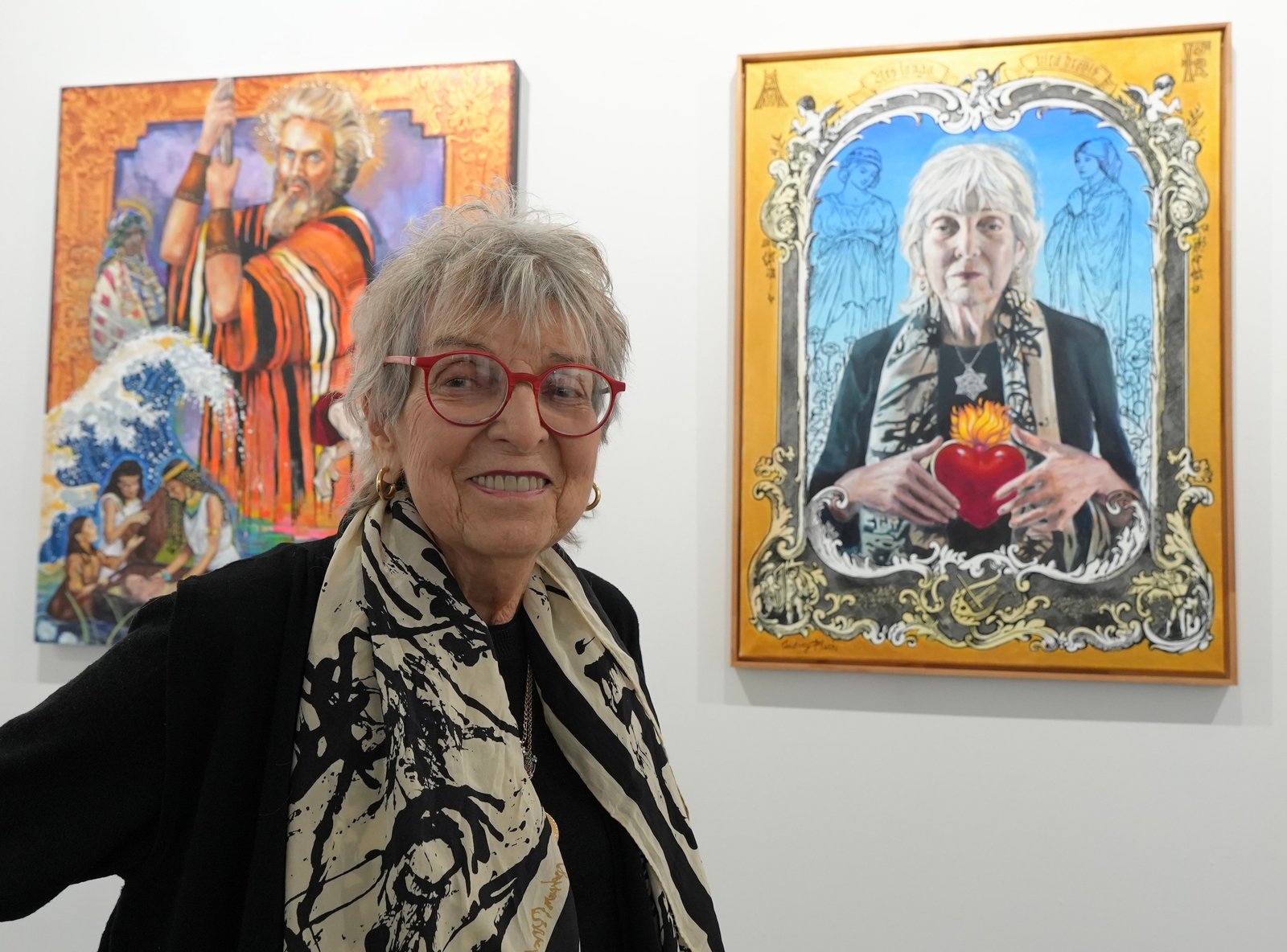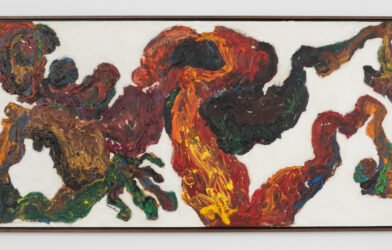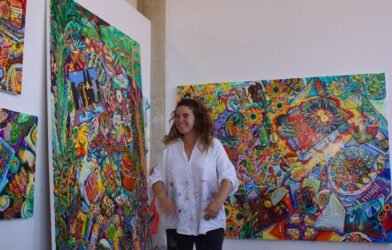Internationally acclaimed painter and sculptor Audrey Flack died at age 93 in East Hampton, New York, on Friday, June 28, due to a sudden aortic dissection, her daughter Hannah Marcus and gallerist Louis K. Meisel confirmed.
Flack is remembered for her impactful beginnings in Abstract Expressionism and as a pioneering female member of the Photorealist movement of the late 1960s through the 1970s. She was born in 1931 to an immigrant Jewish family in Brighton Beach, and spent a chunk of her childhood moving around New York City, eventually landing up in Washington Heights. In a 2021 podcast interview with Hyperallergic’s Editor-in-Cheif Hrag Vartanian and her close friend, artist Sharon Louden, Flack revealed that she was considered a “bad” kid for her hyperactivity and poor grades at school, but eventually gained a reputation as the class artist, which “was the only thing that put the world in order for [her].” She went on to graduate from the High School of Music and Art and was accepted into the fine arts program at Cooper Union, where she studied before being offered a scholarship to study art at Yale University.
In her early career, Flack was invested in Abstract Expressionism, hanging around the like-minded artists who patronized the Cedar Tavern (up until an unpleasant interaction with a drunk Jackson Pollock left her disillusioned, as she told Hyperallergic in the aforementioned podcast) while working odd jobs during school and postgrad. After diverging from the Cedar Tavern crowd and the dark habits that followed them, she began incorporating more figuration into her work over time and enrolled in the Art Students League under the tutelage of Robert Beverly Hale, a renowned instructor of artistic anatomy.

Flack began painting from photographs taken from news clippings. Some consider her 1964 “Kennedy Motorcade” as the first painting of the Photorealism movement. She then began painting from her own photos, including snapshots of her two young daughters, in addition to glistening depictions of shiny lipstick tubes, beaded necklaces, mirrors, and bottled cosmetics or perfumes. She gained attention for her feminized and feminist Vanitas compositions — still lifes rife with symbolic objects — and fixated on rendering light by projecting her photographs onto enormous canvases.
Despite their popularity and inclusion in various museum collections, Flack’s Photorealist works were considered polarizing in a profoundly sexist environment and industry, and were at one point dismissed as no better than mechanical reproduction. Flack recalibrated her interests in the 1980s for the following 30 years, devoting her practice to sculpture, focusing primarily on powerful women and goddesses across different religions, histories, and mythologies. Flack’s bronzes appear in various public spaces, including “Veritas et Justitia” (2007) at the George Edgecomb Courthouse in Tampa, Florida, and “The Recording Angel” (2006) in Nashville, Tennessee.

Flack recently reunited with her affinity for painting, embarking on a new style she dubbed “Post-Pop Baroque,” weaving together dramatic and dynamic baroque subject matter with contemporary topics and societal issues. Her most recent endeavors in the new style were presented in a solo exhibition from March through April this year at Hollis Taggart Gallery in Manhattan.
“We mourn the loss of a true artistic legend who left an indelible mark on the history of American art,” said gallerist Hollis Taggart in a statement to Hyperallergic. “Audrey’s boundless creativity defined her career, spanning seven decades, constantly innovating and searching for new ways of expression, from early years of Abstract Expressionism, to mid-century figuration, to photorealism, and culminating in her final chapter of ‘Pop Baroque.’”
Close friend and artist Sharon Louden told Hyperallergic over the phone that Flack was “a strong woman who not only wasn’t afraid to speak her mind, but only spoke the truth” during the ’50s and ’60s, and that she had been “consistent in living her values throughout her entire life,” which in turn taught [Louden] to do the same.

“Flack had a humor and natural activism in her life and work that gave me the confidence to speak my mind no matter how others react,” Louden left off.
The late artist is survived by her second husband, Robert Marcus, and her two daughters, Hannah and Melissa. An exhibition of Flack’s work is slated to open in October at the Parrish Art Museum in Southampton, New York.









